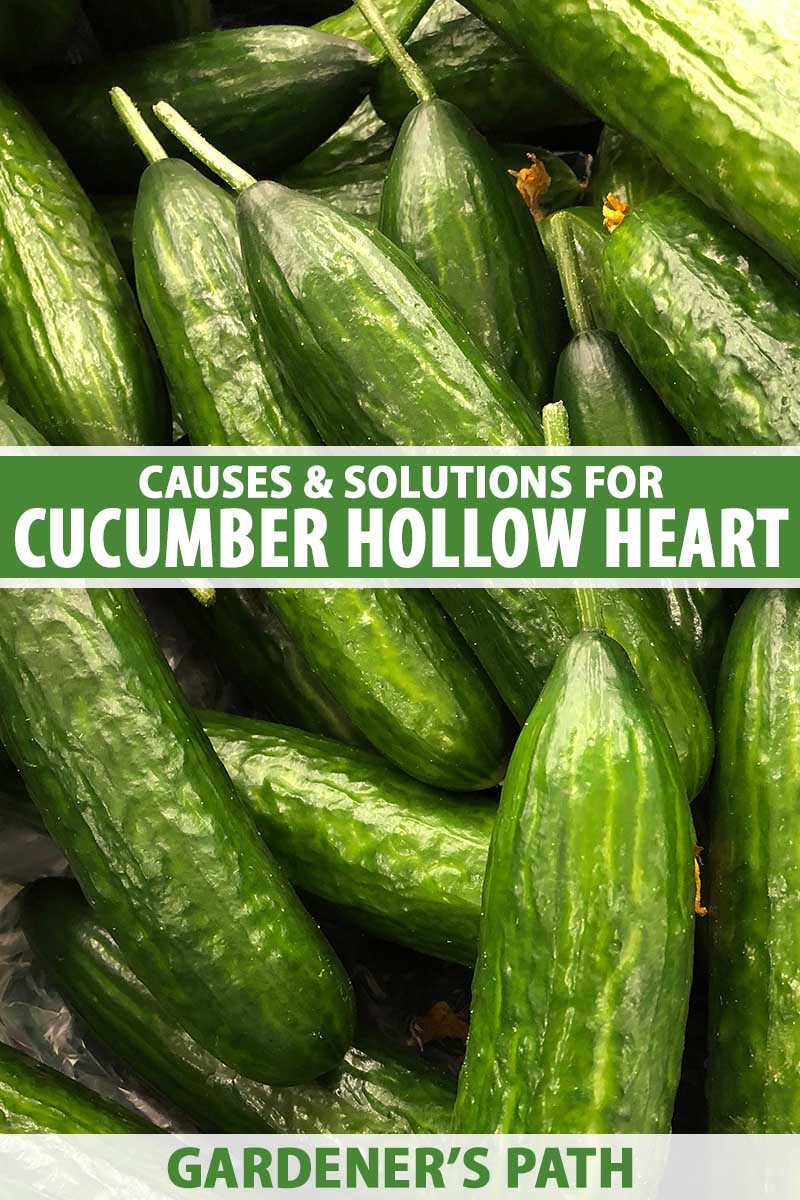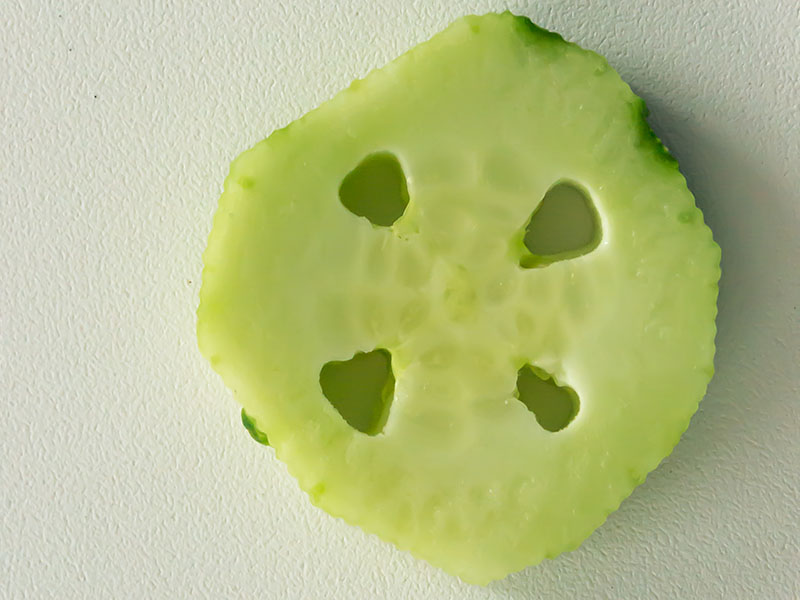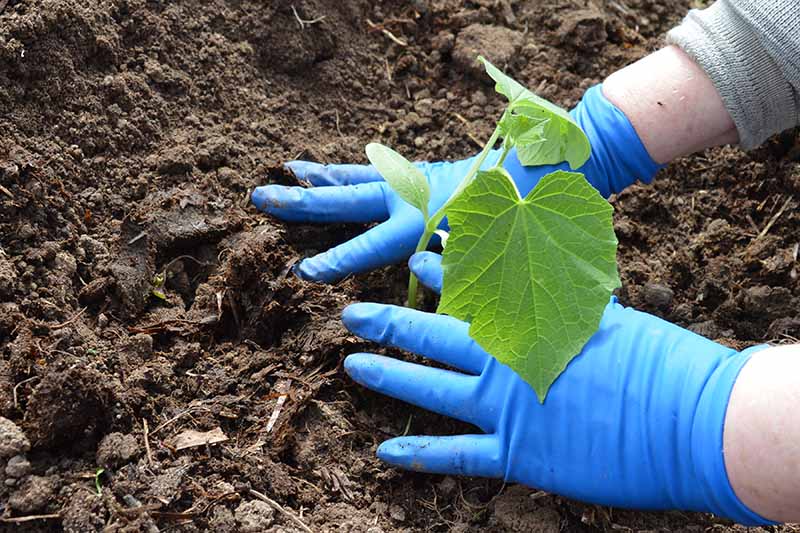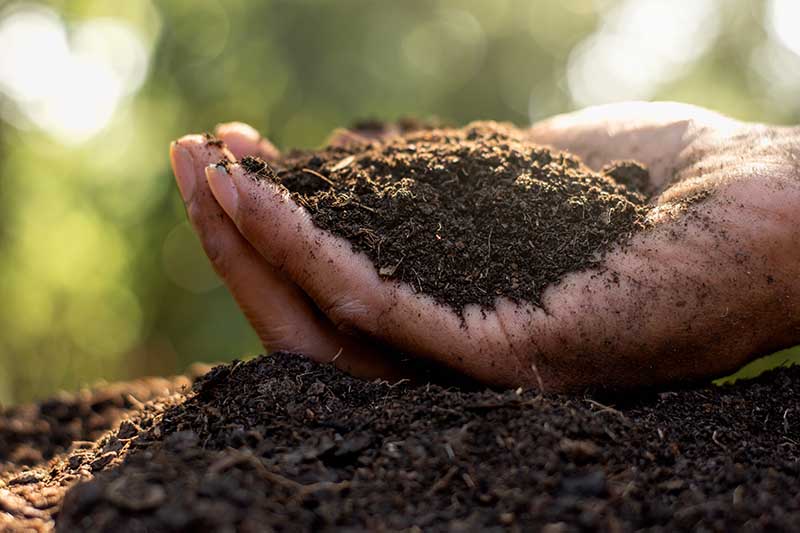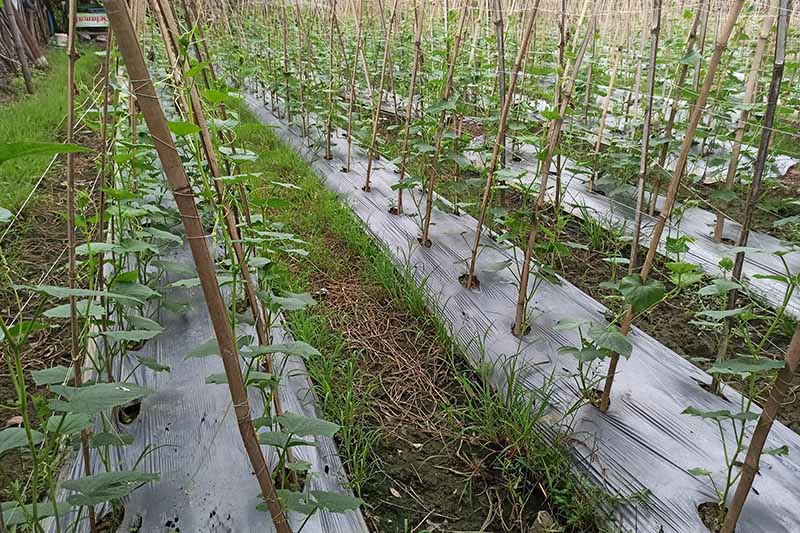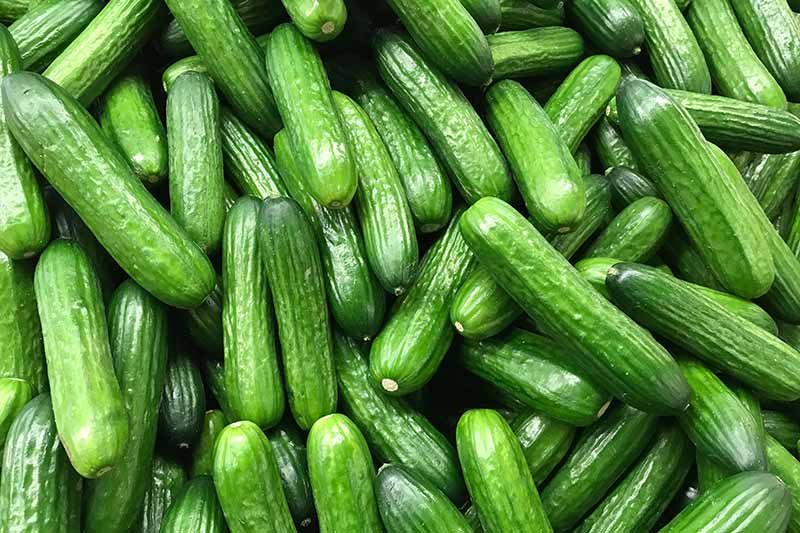But “hollow heart” cucumbers don’t really give advance notice. You may be slicing a fruit to make a salad, or even biting into it as you stroll the garden, before you’re made aware that the unblemished skin is concealing an empty space where the seeds and core flesh would usually be. Bummer! There are a couple of good things about this condition that almost compensate for its surprise element, however. We link to vendors to help you find relevant products. If you buy from one of our links, we may earn a commission. For one thing, compared to the conditions that are obvious while the fruits are still on the plant, hollow heart has more potential fixes you can try right away, instead of focusing solely on doing better the next time you grow. That means it’s not contagious. Other vegetables planted in the same type of soil or in the same growing conditions, like turnips, may indeed contract hollow heart as well. But once you clear up the causes with some quick fixes and long-term preventive measures, it’s unlikely the hollow heart will return – unlike those types of fungi that can live in the soil for years and transmit disease when water is splashed onto the plants. Before we get to solutions and prevention tips, though, let me tell you what can cause this cucumber abnormality, and when you may have an immediate fix available. Keep reading to find an answer to the all-important question of whether it’s safe to eat hollow cucumbers as well! Here’s what I’ll cover:
What Causes Hollow Heart in Cucumbers?
If you see an air pocket where you’d normally expect the center of the cucumber to be, you’ll need to head back out to the garden to assess the conditions that might have caused this abnormal growth. These are the probable causes:
Too Much Water
According to Christopher J. Currey, associate professor in the Department of Horticulture at Iowa State University, cucumber hollow heart is caused by a rapid growth rate, not poor pollination. One thing that causes the fruits to grow too quickly is an overabundance of water. Solution: If your area is receiving more than an inch of rain per week, it might be time to shield the plants with tarps or even umbrellas. Just be sure you don’t go too far in the other direction. If the soil gets too dry, the bushes or vines will start aborting the forming fruits in response to the stress.
Summer Heat
Both the fruits and vines tend to put on a growth spurt when the temperatures reach 75 to 80°F, though the growth rate may slow if the weather gets hotter. Solution: If that’s the situation in your garden and your cucurbits are developing with empty cavities, consider bringing the temperature down a little with some shade cloth, or dampened straw mulch placed on the soil. Just don’t take measures that will drive the temperature below 65°F, or you may stunt the plant’s growth or even kill it.
Excess Nitrogen
A lot of nitrogen in the soil will cause vines, bushes, and fruits to all grow quickly. And if there’s too much nitrogen, the fruits will grow so fast the interior can’t keep up, so they end up hollow at harvest. Solution: If this could be your issue, immediately suspend any more fertilizer applications that contain nitrogen.
Boron Deficiency
Boron isn’t a soil nutrient that gardeners mention every day, but in this instance, low levels could be causing malformed cucumbers. The fruits need access to ample boron, which is the same thing as sodium borate in this case, to form seeds and also cells. If you have sandy soil, you’re more likely to have low levels of boron, since it dissolves and leaches out of porous soil readily. Solution: The bad news here is that it’s unlikely you’ll be able to amend the soil zip-quick if your plants are already producing and you think a boron deficiency might be harming the fruit quality. By the time the soil adjusts to the new chemical balance gained through added amendments, your crop will be finished. But be sure to give this issue attention for next year’s crop. I’ll explain how in the next section.
Preventive Measures
If you discouraged the hollow cucumbers your plants were producing and managed to get some high-quality homegrown produce out of the deal, way to go! Decide to give up for this season instead? That’s understandable. Before you grow cukes again, though, make sure to take these steps so you’ll avoid hollow heart next time – and probably for many seasons to come. Any of these tips also serve as great options for anyone who’s trying to grow a bumper crop of these vegetable garden stars. First, get a soil test done and improve your soil. Be sure to test first, before applying any amendments, so you’ll know which nutrient levels are fine and which you need to improve before next spring. Some tests or testers may not automatically include boron, so find a kit or provider that does. Neal Kinsey, president of Kinsey Agricultural Services, a consulting firm that restores and maintains balanced soil fertility, recommends a minimum boron level that’s no lower than 0.8 parts per million. He shared this additional advice in Organic Farmer Magazine: “But because it can be easily leached with rainfall or irrigation water, enough material should be applied to build for a higher level, and 1.5 to 2.0 parts per million is considered ideal. Excellent boron levels are only most effective when there is sufficient calcium and phosphorus.” If needed, replenish the boron in your garden with an application of Borax. Mix a tablespoon with a gallon of water and apply an ounce of the concoction to each square foot of your soil, using a clean sprayer. (Keep in mind that borax can be harmful to pets, so be careful with when and where you apply it.) It’s also a good idea to amend your soil in the off-season with plenty of composted organic matter, and to consider growing a crop of green manure. Both of these tactics will create well-draining soil that can help plants cope with excessive rains without growing too rapidly. Particularly if hollow heart is a persistent problem in your garden season after season, plant resistant varieties if you can, and be sure to read seed packets and product descriptions carefully. The cultivar you’re growing now could be more susceptible to developing an empty cavity than others you might plant instead. And ask your local agricultural extension agent if there are any cultivars that grow particularly well in your area, and that are known for their resistance to hollow heart. Consider switching to container varieties. If you’ve had a lot of difficulty with either excessive rain or drought conditions, it’s a good idea to grow cucumbers in containers rather than in the ground. This won’t make the watering chore easier, since potted plants tend to require more frequent bouts with the watering can! But it will put the plants in a contained spot where you can keep track of their moisture levels more readily than you can when they’re sprawling throughout a garden bed. Positioning them near a hose or water barrel is best. It’s a lot easier to place a couple of containers under an umbrella when lots of rain is expected, versus trying to shield a whole garden bed. You can also place your containers on wheeled plant stands, so you can transport them beneath the cover of an awning, or even put them in the garage temporarily until the wet weather passes. It’s also simple to replenish or replace container soil in response to a soil test that indicates your cukes might be growing in conditions that make them vulnerable to hollow heart.
Can You Still Eat Them?
Is it safe to eat hollow cucumbers? Well, sure. They’re just underdeveloped, not carrying bacteria or pickleworms, or anything like that. As for whether you want to eat them, I’m going to answer a soft, “No.” It’s technically possible, but the fruits with empty cores tend to be a bit bitter. Noshing on them might diminish your love affair with the homegrown picklers and slicers. And to me, that’s too much of a sacrifice to make just to be able to say you ate every bit of produce that came from your garden. If you’re determined, though, consider cutting out the core portion and slicing off the stem ends, which tend to be the most bitter. Then chop the other portions finely and use them to make pickle relish. Typically, the vinegar, salt, and sugar will mask any of that bitter taste. But I’d still advise you to send these misfits to the compost. If you don’t yet make your own compost, this newfound supply of only technically edible vegetables could be a great reason to start. Find more tips on composting for beginners in our guide. I also want to clear up one point of potential confusion regarding what’s safe to eat: Gardeners who also preserve their harvested crops may end up with hollow pickles. We’re talking about the same homegrown vegetable, but the cause for pickles with space in the center in this case is a lag between the time when they’re picked, and when you pickle. To avoid this outcome, make sure to proceed with the hot water bath canning or fermenting within 24 hours of picking your garden-grown cucurbits. In an emergency, you can put them in the fridge in the meantime, but that only gains a day or so of wiggle room. You can eat these, too, and they’ll probably be pretty good. They may have a little squishiness, or there’s a chance their appearance may make people fret that there were insects eating the insides of the produce that you used for pickling, but the taste will be just fine. You can always disguise the empty centers by chopping the pickles after you open a jar and before you serve them.
Don’t Be Bitter About Hollow Heart Cucumbers
I’m not sure vegetable gardening would be as enjoyable if everything always grew uniformly and blemish-free. Sure, you’d harvest only perfect produce that way, but it would be so… robotic. It would also require an ability to control Mother Nature, since well-formed fruits and healthy vines often rely on consistent rains, plenty of sunshine, and that sort of thing. I’ll happily sacrifice entirely predictable growing conditions for the joy of weather-watching. I’ll just compensate for drought, freezes, and strong sun when I can, and shrug when I can’t. Remember, too, that if growing vegetables always went exactly as planned, you’d miss out on the pleasant surprises that often result from imperfect gardening. You know, like the volunteer tomatoes that took over when you didn’t weed enough, and ended up producing the sweetest red cherries you ever tasted. Or the arugula that bolted way too early and introduced you to the savory sensation of its edible blooms. These are a few of my experiences, but what about you? Have you persevered when faced with hollow heart or other cucumber-growing challenges? If so, how did you do it? Kindly share your insights in the comments section below. And whether you’re a newbie to growing these garden all-stars or a veteran, if you found this info useful, you’ll probably enjoy reading these cucumber guides next:
Add Cooling Crunch to Your Cuisine All Season: How to Grow CucumbersWhat Causes Holes in Homegrown Cucumbers?Bring in That Bumper Crop: How and When to Harvest CucumbersHow to Store Homegrown Cucumbers
